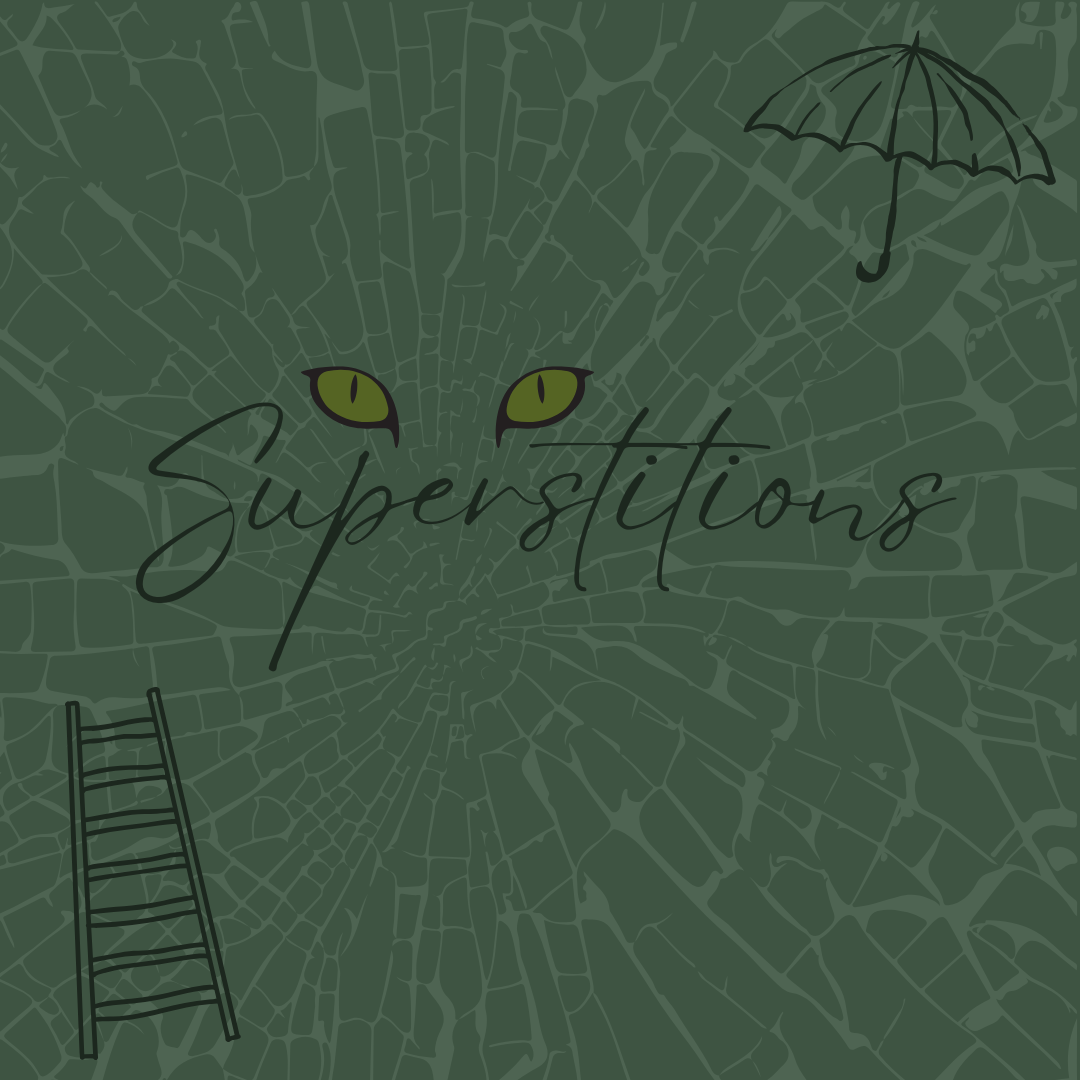Ladders, umbrellas, mirrors, sneezes, knock on wood, the number thirteen and black cats all have one major thing in common. Superstitions. They all bring bad luck in certain cultures and scenarios. Their origins often go unknown despite their use in daily life.
Walking under a ladder brings a lifetime of bad luck, according to superstitious people. One of its origins comes from Christian belief in the Holy Trinity, commonly depicted as a triangle. A ladder propped up against a wall creates a triangle, and walking under it “disrupts” the Holy Trinity, bringing the person bad luck. Another theory comes from the belief that a leaning ladder resembles gallows, and walking in between it and the wall means that the person who did it gets closer to death.
Opening an umbrella indoors originated in both ancient Egypt and the Victorian Era. In ancient Egypt, opening an umbrella indoors was seen as disrespectful to the sun god Ra. Doing this would give the person bad luck, cursed by Ra. In the Victorian Era, umbrellas had a very dangerous design with hard metal spokes, and opening them indoors could cause injury to people in the house.
Breaking a mirror is said to bring seven years of bad luck. This ancient Roman superstition began with the belief that mirrors reflected one’s soul. By damaging the mirror, the person damages their soul. They also thought that their gods observed souls through mirrors, so damaging them would anger the gods, causing bad luck. However, Romans believed that the body renewed itself every seven years, which means that the bad luck would disappear seven years after the action.
“Bless you!” People typically say this statement after another person sneezes. One of the more common theories as to its existence because in 14th century Europe, during the Bubonic Plague, infected people were often told “God bless you” as a way of wishing them good health and a speedy recovery. This has since evolved into the “bless you” commonly heard today. Another theory consists of the belief that a sneeze occurs because their body needs to expel a “demon.” While this theory does not pertain to the current age, in the Middle Ages, they believed that blessing someone immediately after sneezing meant that the “demon” would not re-enter the person. Today, “bless you” tends to just occur as a common politeness, a way to carry on the tradition of wishing sick people good health.
‘Knock on wood.” This statement typically appears when someone says something that could invoke bad luck. The act of knocking on wood or saying those words, should counteract the potential bad luck, giving the person good luck instead. One of the reasons why people believed that connected with the belief that “demons” or bad spirits resided in wood. By knocking on wood, the person would disorient the spirit. This would make it to where the spirit would forget about what they just heard. This ensured that they could not go and “interfere” with the thing the person said, thereby preventing bad luck.
The number thirteen, having unlucky qualities, comes up quite often. It began with two different religions. In Norse Mythology, Loki arrived as the thirteenth guest, only arriving to cause trouble and make chaos. In Christian literature, during the Last Supper, thirteen people sat at the table. People equated the thirteenth person with Judas Iscariot, who later betrayed Jesus. Because of these thoughts and many others, people will often exclude the number thirteen from things such as floors in buildings, going from twelve to fourteen.
Black cats tend to get overlooked animals in shelters due to their unfortunate reputation. In the 13th century, witch rumors ran rampant. Black cats tended to be seen as witches in disguise or witches communicated with them for nefarious purposes. In medieval times, people believed that black cats brought bad health, so one crossing someone’s path would bring them bad luck.
Many common superstitions today come from old beliefs, grounded in years of history and culture. The original meanings, although typically overlooked, can offer interesting insights into cultures and traditional norms today.


